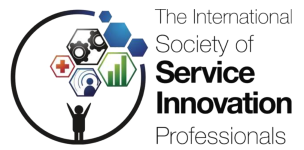
We have entered the era of Smart Machines (Artificial Intelligence, powered by Cloud, Analytics, Social Networks and accessible through mobile devices and sensors) that provides great opportunity for individuals, communities, regions, countries and the planet; yet, it is disrupting traditional assumptions and beliefs about the certainty of organizations, employment, and the nature of work itself.
Consider:
- There will be 55 million job openings in the economy through 2020: 24 million openings from newly created jobs and 31 million openings due to baby boom retirements.
- 47% of US jobs are at risk of displacement—many of the current and future jobs will be different than what we know because of the integration of Smart Machines in the workplace, requiring entire business processes to be transformed, and jobs performed by people to be redefined, much like the bank teller’s job was redefined by the advent of ATM and online banking.
- Employers will seek cognitive skills such as communication and analytics from job applicants rather than physical skills traditionally associated with manufacturing.
- The United States will fall short by five million workers with postsecondary education— at the current production rate —by 2020.
The National/Global Problem
The pace of change has accelerated; the scope of technological change is increasing.
Unlike innovation in the past, the benefits of technological change are not being widely shared — real median wages have fallen behind growth in productivity and inequality has increased.
These are big challenges.
i4J (The Innovation for Jobs Ecosystem) conducts conferences globally to bring together professionals from all sectors—corporate, entrepreneurs, government, education, NGO— to generate both understanding of the issues and practical approaches to address them.
I was privileged to attend the i4J “The Business of Disrupting Unemployment Conference” at SRI, Intl. January 28-29. The format was fast paced, interactive and masterfully designed and executed by Vint Cerf and David Nordfors. A host of thought leaders, experts, entrepreneurs, and academics were engaged in exchanging viewpoints and brainstorming approaches and solutions to become part of, “…a revolution in strengths finding, education, matchmaking, HR and the creation of opportunities in a long-tail labor market.”
Here are some highlights of foundational assumptions and guidelines from participants that could lay the groundwork to scale solutions:
Assumptions/Guidelines
Vint Cerf: Government enabling and incentives are necessary for large efforts to succeed. Seat belt use adoption and smoking elimination are examples in changing positive social norm behavior.
Curt Carlson: Reduce cost/time increase skills/job matching. How can we take the friction out of each system?
Put together education, skills development and workers for learning fast: do, get feedback, multiple representations (continuous improvement), teams, big ideas, mentors (not just teachers), and create a complete system.
Gary Bolles: Need for collective tissue to understand how to interconnect. Build on platforms for better ways to interconnect so they work more effectively.
Convene a “big tent” meeting to address and adopt national funding and experimentation for innovation. All sectors should be included: entrepreneurs, investors, corporations, foundations, government, education, associations, and trade unions.
The part that is missing is a process for people to self describe and self-connect with others. Need to scale independent work. Currently, there are nascent platforms. Those platforms need improve/expand to strongly encourage independent work effectively.
Tess Gilman Posner: Change how people access wealth and income. Find a way for people who do valuable things to get compensated (such as home health care).
John Hegel: Eco-systems work best when small groups of 10-15 people come together and are mobilized to do something and can tap into a broader infrastructure. “Cellular Church” enables groups to watch/learn from each other on a common platform. So small groups can collaborate to work on big problems and interests.
Herman Gyr: Mobilize and engage participants through eco-systems. Each participant should be getting better, faster.
Allen Blue: Create an iterative, smart global employment network that can be continuously more intelligent and accessed by everyone. Linked-In plan involves developing an Economic Graph: a digital map of the global economy that connects talent with opportunity. There are six elements to the plan:
• Creating a LinkedIn profile for every member of the global workforce
• Creating a LinkedIn profile for every company
• Creating a digital representation on LinkedIn for every global job available
• Creating a LinkedIn profile for every university, higher education organization, and vocational training facility that makes it possible to acquire the skills necessary to fill available jobs
• Creating a publishing platform that allows every individual, company, and university to share professionally relevant knowledge
• Stepping back to allow intellectual, working, and human capital to flow to where it can best be leveraged to transform the global economy
Yassi Moghaddam: T-Shape Skills will be needed for the future workforce. People will need broad experience in industries, regions, and deep knowledge and mastery of a discipline with ability to work collaboratively with other disciplines, platform systems knowledge, and communications skills.
My one big take-away from listening to participants at the conference: the need for a global technology platform, bringing all players together, so many innovative approaches to the Jobs/Skills/Unemployment problem can connect and develop participants to learn better, faster, cheaper for continuous job training, skills and mindset development for the emergent Smart Machines Economy.
Jeff Saperstein is Co-Founder of CVC Group and a Career Transition Coach.
